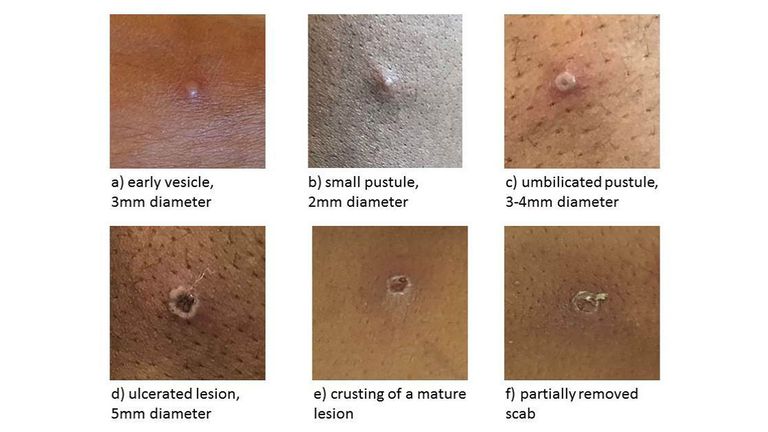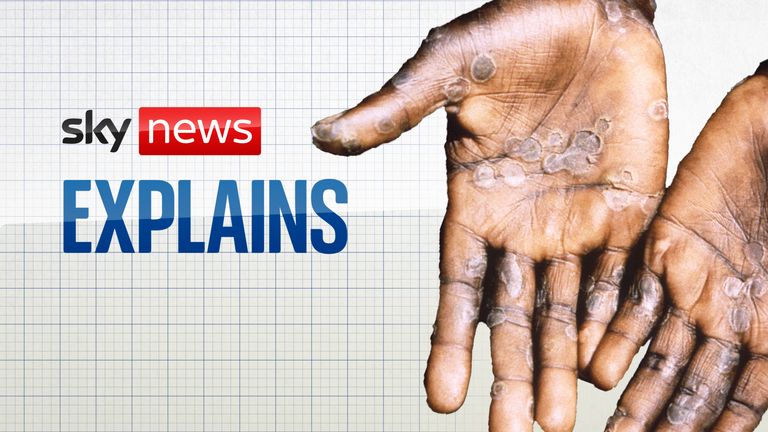[ad_1]
Monkeypox is spreading in the UK through community transmission and new cases are being detected on a daily basis, a senior doctor has warned.
The latest number of infections in the UK will be revealed on Monday after it was confirmed the total had risen to 20 on Friday.
The cause of the outbreak is unknown and there is “no obvious connection” between those infected to a single event, according to Dr Susan Hopkins, from the UK Health Security Agency (UKHSA).
Monkeypox is rarely identified outside of Africa but about 80 cases have now been confirmed across Europe, North America and Australia, with a further 50 suspected infections.
The disease, which was first found in monkeys, can be transmitted from person to person through close physical contact – including sexual intercourse – and is caused by the monkeypox virus.
It causes fever, body aches, chills and fatigue in most patients, while people with severe cases can develop a rash and lesions on the face, hands and other parts of the body.
Dr Hopkins, a chief medical adviser at the UKHSA, said the illness is “relatively mild” in adults, with young children more at risk, but refused to comment on reports that a patient is being treated in intensive care.
She told BBC One’s Morning Show: “We are detecting more cases on a daily basis.
“We know there’s been a period of restrictions across Europe and we don’t know where this infection has come from and how it’s come into Europe.
“There’s no obvious connection in our cases in the UK to a single event.”
Dr Hopkins said the risk to the general population “remains extremely low at the moment” but people “need to be alert to it”.
“We’re saying to people if you’ve got symptoms, avoid close contact with others and seek medical attention,” she added.
She said early symptoms are “non-specific” and feel “like a viral-type infection”.
In later stages, people develop a rash, usually to the face, hands and arms that can also affect genital areas.
“It starts as red spots and moves to vesicles – those are blister-type lesions that are a bit like chickenpox,” Dr Hopkins said.
“They scab over and once the scabs have fallen off, they’re no longer infectious.”
Dr Hopkins said there was community transmission of monkeypox “largely centred in urban areas”, adding: “We are predominantly seeing it in individuals who self-identify as gay or bisexual, or other men who have sex with men.
“We are finding cases that have no identified contact with an individual from west Africa, which is what we’ve seen previously in this country.”
Read more:
UK faces ‘significant rise’ in cases in next week, top doctor says
Biden warns monkeypox is a ‘concern for everybody’
How do you catch it, what are the symptoms, and how easily does it spread?
Asked why it is being found in that demographic, she said: “That’s because of the frequent close contacts they may have.
“We would recommend to anyone who’s having changes in sex partners regularly or having close contact with individuals that they don’t know to come forward if they develop a rash.”
Dr Hopkins said there was “no direct vaccine for monkeypox” but a form of smallpox vaccine was being used for close contacts of infected people.
“We’re using it in individuals who we believe are at high risk of developing symptoms and using it early, particularly within four or five days of the case developing symptoms,” she added.
[ad_2]



